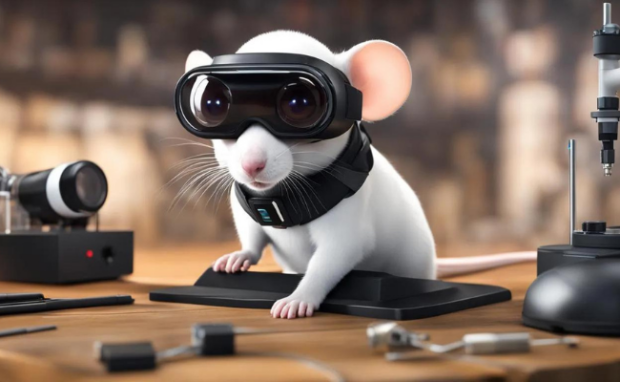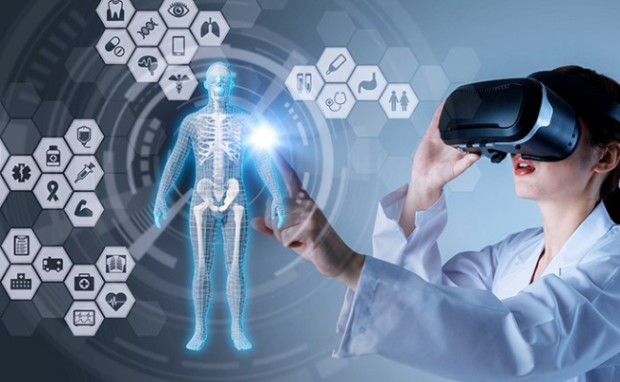Scientists create VR googles for mice to study how they think
Northwestern University researchers developed VR goggles for mice to study how they respond to overhead predators. The device simulates their natural environment so that they can elicit natural reactions from laboratory mice. As a result, the experts can study how it responds to swooping threats like eagles.
Virtual reality lets us simulate environments that are too difficult or dangerous to replicate. That is why it is a great research tool that lets scientists get results close to real life. Consequently, VR could give us more insights into various scientific fields. Specifically, the VR goggles for mice can help us learn more about these little critters and ourselves.
This article will discuss how VR goggles for mice help researchers. Later, I will cover other recent applications of virtual reality technology.
How do the VR goggles for mice work?

Northwestern University scientists created a miniature set of VR goggles called Miniature Rodent Stereo Illumination VR (iMRSIV). However, it doesn’t rest on a mouse’s head.
Instead, the researchers position it in front of a mouse to cover its entire field of view as it runs on a treadmill. As a result, it simulates the animal’s natural habitat, providing experts with realistic responses.
The Independent says many research projects have used VR systems to study mice. However, they still “seemed fake” to the animals. Daniel Dombeck, a professor of neurobiology at Northwestern University, explained:
“So far, labs have been using big computer or projection screens to surround an animal. For humans, this is like watching a TV in your living room: you still see your couch and your walls; there are cues around you, telling you that you aren’t inside the scene.”
You may also like: AI designs unique robots in seconds
“Now think about putting on VR goggles, like Oculus Rift, that take up your full vision. You don’t see anything, but the projected scene, and a different scene is projected into each eye to create depth information. That’s been missing for mice.”
“This stimulation in real environments causes mice to freeze or flee, reactions they have to survive a predatory bird attack in the wild,” Dombeck added. Consequently, the Northwestern University experiment discovered mouse neurons related to navigation, suggesting they moved to a different location.
“It was as if they were thinking about where they would rather be – a safe, covered location up ahead,” Dombeck stated. However, IEEE Spectrum said it still has limitations because mice can navigate environments with their noses. “We proved that mice are able to navigate by olfactory cues alone, something that humans can’t do,” he added.
Other VR applications

We’ve also been using virtual reality technology to improve education. For example, Case Western Reserve University’s School of Medicine is the first colleague to use VR for anatomy courses.
Microsoft collaborated with the anatomy faculty to create the HoloAnatomy Software Suite. It uses the Microsoft HoloLens to show the human body in three dimensions via mixed-reality technology.
You may also like: How to fix lagging mouse
Students wear the HoloLens to view a full-scale model of a human that they can freely dissect and study. Robert L. Masson, the neurosurgeon CEO of the tech firm eXpanded eXistence, said VR medical training is less expensive than using cadavers.
Moreover, Ilumis CEO Mark Day stated in a news release, “Universities can reduce the expensive, time-consuming task of obtaining cadavers.…” Masson also said HoloAnatomy would enable students to work at the macro and microscopic level for detailed anatomical education.
In other words, med students could check each part and then zoom in to look at the finer details. As a result, universities could merge anatomy and histology into a single course. Day said, “Students can enter a world of new possibilities where they learn faster… and transcend the classroom with unprecedented collaborative potential.”
Conclusion
Northwestern University scientists created VR goggles for mice to understand how these animals react to overhead predators. The iMRSIV system is more immersive than previous simulations, enabling test subjects to provide realistic results.
The researchers admit their device has limitations. However, neurobiology scientist Daniel Dombeck said, “Our goggles are small, relatively cheap, and pretty user-friendly as well. This could make VR technology more available to other labs.”
Learn more about the VR headset for mice by reading its Neuron webpage. Moreover, check out other digital tips and trends at Inquirer Tech.